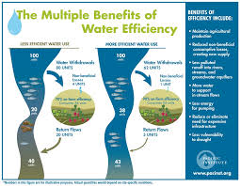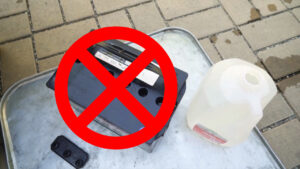Coagulation-flocculation is a process commonly used in water treatment to remove contaminants and improve drinking water quality. This technique consists of adding chemicals to form flocswhich are large aggregates of suspended particles. Although coagulation-flocculation is highly effective in removing many types of contaminants, it also has its drawbacks. disadvantagesThese include the production of sludge and increased salt concentration in the treated water. In this article, we'll look at the advantages and disadvantages of this water treatment method.
The pros and cons of coagulation-flocculation: an overview.
Coagulation-flocculation is a water treatment technique widely used in drinking water treatment plants. Chemicals such as alum and lime are added to cause the formation of flakes that trap impurities in the water. Here's an overview of the advantages and disadvantages of this technique.
The benefits: Coagulation-flocculation is highly effective in removing impurities from water, such as suspended particles, bacteria and viruses. It is also relatively inexpensive compared to other water treatment methods. What's more, it's easy to implement and can be used with a wide range of water types.
Disadvantages: Coagulation-flocculation uses chemicals, which can pose long-term health problems for people who consume water treated in this way. In addition, this method can produce toxic waste that must be disposed of properly. Finally, it requires a lot of energy to operate, which can lead to high operating costs.
In short, coagulation-flocculation is an effective and inexpensive method of water treatment, but it also has drawbacks that need to be taken into account. Water treatment plant managers need to weigh up these pros and cons before deciding whether or not to use this technique in their water treatment process.
DROP (Treatments) in 10 min
[arve url="https://www.youtube.com/embed/dMyTVD93Cmk "/]
gout: symptoms, treatment and prevention
[arve url="https://www.youtube.com/embed/3rmGPmBRTbo "/]
Does the coagulation-flocculation stage affect conductivity?
Yes, the coagulation-flocculation step has an impact on water conductivity . Coagulation involves adding chemicals such as aluminum or iron salts to neutralize the electrical charges of particles suspended in the water, causing them to coalesce into larger flocs. These flocs are then removed by decantation or filtration. This step can modify the conductivity of the water, as it can remove certain dissolved ions present in the water. However, the variation in conductivity will depend on the chemicals used and their concentration, so it's important to control this step precisely to avoid negative impacts on water quality.
What types of pollution can coagulation-flocculation treatment eliminate?
Coagulation-flocculation treatment is a process commonly used to remove various types of pollution from water. The pollutants eliminated by this treatment include suspended solids, colloids, viruses, bacteria and certain heavy metals such as lead, copper and mercury. In general, coagulation-flocculation treatment is effective in removing organic and inorganic pollution, as well as pathogenic micro-organisms. However, it can be less effective in removing specific pollutants such as organic chemicals and complex mineral compounds.
What is the purpose of blood coagulation?
The purpose of blood coagulation is to stop bleeding when blood vessels are injured. It is triggered by a complex process involving the formation of a blood clot, also known as a thrombus, at the site of injury. This process involves various stages, including blood vessel contraction, platelet plug formation and blood coagulation thanks to specific proteins called coagulation factors. Once the clot has been formed, it enables seal the breach and prevent excessive blood lossThis facilitates wound healing. However, excessive coagulation can be dangerous, leading to the formation of blood clots in vessels without injury, increasing the risk of cardiovascular disease.
What are the advantages of coagulation-flocculation in wastewater treatment?
Coagulation-flocculation is an important step in wastewater treatment. It consists of adding specific chemicals to agglomerate solid particles suspended in the water to form large flakes called flocs, which are easier to remove.
This technique offers several advantages:
– Improved water quality: By eliminating suspended particles, coagulation-flocculation considerably reduces turbidity and water color, making it clearer and more pleasant to look at.
– Odor reduction: By removing suspended organic particles, coagulation-flocculation also helps to reduce unpleasant odors that may be present in wastewater.
– Simplification of subsequent steps: By forming large flocs, coagulation-flocculation facilitates the next stage of treatment, sedimentation, which consists in separating the flocs from the treated water. This reduces the time and costs associated with this stage.
In short, coagulation-flocculation is an essential step in wastewater treatment, improving water quality, reducing odors and simplifying subsequent treatment stages.
How to maximize the benefits of coagulation-flocculation in drinking water treatment?
Coagulation-flocculation is a crucial step in drinking water treatment. It removes impurities such as suspended solids and organic particles from the water.
To maximize the benefits of coagulation-flocculation, it is important to select the right coagulant and determine the appropriate dose for each specific application. Raw water quality must also be constantly monitored to ensure optimum performance.
In addition, optimization of mixing time and speed within the coagulation reactor is also essential to ensure uniform coagulant distribution and efficient floc formation.
In short, good coagulation-flocculation practice can help improve the quality of drinking water to meet the quality standards required for human consumption, and thus protect public health.
What are the environmental drawbacks of coagulation-flocculation?
Coagulation-flocculation is a wastewater treatment technique in which chemicals are added to destabilize suspended particles in the water, causing them to agglomerate into larger flocs, which are then separated from the water. Although this method is effective in removing pollutants, it does have its drawbacks for the environment.
1. Use of toxic chemicals: Coagulation-flocculation requires the use of chemicals such as aluminum sulfate or ferric chloride, which are toxic to the environment. These chemicals can contaminate water and cause damage to aquatic ecosystems.
2. Production of residual sludge: When particles are removed from water, they form residual sludge, which must be treated and disposed of appropriately. If this sludge is not managed properly, it can cause environmental problems such as soil and water contamination.
3. Energy and water consumption: The coagulation-flocculation process requires large amounts of energy and water to mix and process the chemicals. This can have a negative impact on the environment, contributing to the waste of energy and natural resources.
In conclusion, although coagulation-flocculation is an effective method for removing pollutants from water, it can have negative impacts on the environment. It is therefore important to find more sustainable alternatives for wastewater treatment.
In conclusion, coagulation-flocculation is an effective method for treating water and making it potable. The advantages of this method are numerous: it removes suspended particles, bacteria and viruses from water. In addition, coagulation-flocculation can be used to remove heavy metals and other contaminants from water.
However, there are also disadvantages associated with this method. It often requires the use of chemicals such as aluminum sulfate or ferric chloride, which can be of concern for the environment and human health. In addition, coagulation-flocculation can be a costly process, requiring a lot of space for equipment.
In summary, coagulation-flocculation offers many advantages for water treatment, but it's important to also consider its drawbacks before choosing this purification method. Ultimately, it's crucial to strike a balance between the quality of treated water and its impact on the environment and human health.








